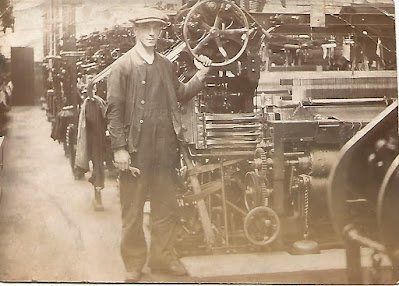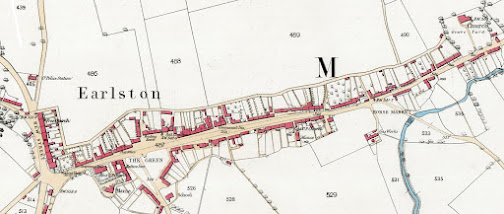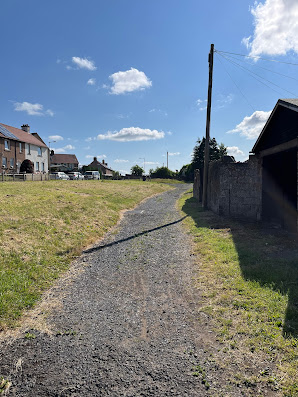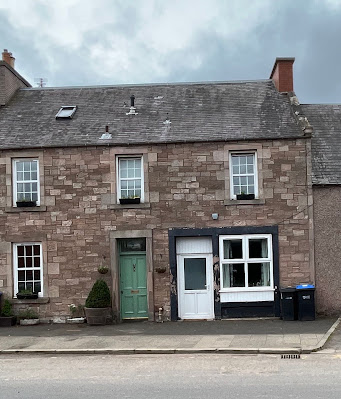In 1812 Charles Dickens was born in Portsmouth to John and Elizabeth Dickens.
He attended school until aged 12 when he was forced to get a job in a boot-blacking factory after his father was jailed in a debtors prison.
After 3 years, Dickens returned to school before embarking on a career in journalism.
 |
| Charles Dickens (1) |
Dickens career as an author began in 1836 when he had his first novel, Pickwick Papers, published in serialised form.
Around that time, Dickens visited an area of Westminster known as the Devil's Acre and was deeply affected by the terrible conditions he witnessed. Based on his experience, he wrote a novel revolving around an orphan who had run away from a workhouse to London, where he became involved with a gang of thieves, living and working in a fictional Devil's Acre.
The novel was called 'Oliver Twist' and was first published in serial form, then as a three-volume novel.
In the story, the Devil's Acre becomes Jacob's Island. Dickens describes it as
'the filthiest, the strangest, the most extraordinary of the many localities that are hidden in London'where the houses were
'so filthy, so confined, that the air would seem to be too tainted even for the dirt and squalor'.
The year was 1838.
What has that got to do with Earlston?
In 1807 Andrew Walker was born in Earlston to Robert Walker and his wife, whose name was not recorded.
 |
Extract from Old Parish records showing Andrew Walker’s registration of birth(2) |
He worked at Newton Don house near Kelso, then Camperdown House near Dundee. Later he took up a new position at a house in Hans Place in London.
One evening while out walking he became lost in Old Pye Street, in 'the Devil's Acre'.
 |
| Victorian London (3) |
Appalled by the conditions he saw, he decided to give up his work as a gardener. He applied to join the London City Mission (LCM) as a missionary and asked to be assigned to 'the Devil's Acre'.
The Archives of the London City Mission Index of City Missionaries(4) record that on October 29, Andrew was accepted as a missionary with a salary of £65 per annum. The records also show that he was appointed to the Old Pye Street District in Westminster.
The year was 1838.
The first Ragged School
Andrew was convinced that even a basic education would benefit the street children.
He found a disused stable, and with financial backing from Anthony Ashely-Cooper (Lord Ashely, 7th Earl of Shaftesbury), Andrew established the first Ragged School. With Lady Trowbridge's support, he could furnish part of the school to accommodate girls. Lady Hope provided sixty of the children with articles of clothing.
The London City Mission Society Committee Minutes show that
'On the opening day, many titled people were there.'
Such support would profoundly affect the provision of free education, although it would take many years to happen.
Andrew's work was recognised by the LCM in 1841 when he was awarded a salary increase of £5. Then in 1852, Andrew was promoted to training superintendent with a salary increase of £10.(4)
Street children and ex-convicts
In 1840, Andrew was asked by the Mission to take action to stem the growth of the poor and criminal classes in his area. His work with street children was successful with more and more children benefitting from an elementary education. However, Andrew realised that part of the problem lay in criminals released from prison without any means of support. Therefore, they were compelled to return to crime as their only means of survival.
Andrew was convinced that if he provided ex-convicts with a trade, they would have some chance of gainful employment.
He established a nursery where ex-convicts could learn about the basics of horticulture. Horticulture was very popular during the Victorian era, with businesses ready to meet the demand for flowers, laying out and maintaining gardens.
The plight of the impoverished street children and ragged school was a recurring theme in Dickens' books, such as Oliver Twist, Nicholas Nickleby and A Christmas Carol. There is no doubt that Dickens was impressed with Andrew's work, in particular his nursery.
Dickens wrote a weekly journal called 'Household Words’. In it, he would write on many topics to bring to the broader public's attention of social injustices. For the mid-1800s, this was very 'woke'!
In 1857, Dickens wrote how Andrew had established a gardening business, and it was advertised as
Wellington and Bedford Nurseries
A. Walker
Nurseryman and Florist
Flower stands furnished, Gardens Laid Out and attended to.
Carriage entrance, Wellington Road
The sign bore the motto 'Work - the Restorer of Virtue'
In an article titled 'Tilling the Devil's Acre' Dickens described Andrew's nursery as follows:
In this nursery garden, the rose opens noiselessly under the hand of the cracksman; the coarse fingers of the garroter clasp the neck of the hyacinth to its stick, and light touches of the pickpocket delicately tend to the lilies of the valley.
As the youths were watering the masses of young plants that drooped their leaves under the heat of the spring sun, they were but doing as they were done by. Even to the eye of the flesh, there is a peculiar droop of a young thief's head, that may be taken as an emblem of the moral drought by which, if not a man will help him, he must die. It was still to be in some of these young gardeners; but there was evident in all the sense of a reviving influence. Labour in the open air had taken haggardness out of their cheeks, and honest living had quickly put healthy looks into their eyes.(5)
Making men of good character
Andrew's experiment with his work with ex-convicts was working. However, to take it to the next level, he selected a youth, provided him with food and accommodation and trained him as a gardener.
Bear in mind that the lad had been a thief and vagrant for several years, driven from his family home by his abusive step-grandfather. When he entered the Ragged School, his possessions were 'an old tattered coat and part of a pair of trousers and these a mass of filth'.
After five months of training, the youth was deemed ready for employment in the wider world. Through the kindness of Lord Ashley he was accepted as a migrant to Australia.
On learning that he had been successful, the youth was overjoyed. Shortly before embarking on his voyage, he said:
'If ever I should be possessed of a farm, I will call it Ashely's Farm. I shall never forget the Ragged School, for if it had not been for it, instead of going to Australia with a good character, I should have been sent to some other colony loaded with chains.
We don't know if he ever possessed that farm, but he was reportedly successful in his new life.
Andrew's next task was to scale up the training of more young gardeners. Over the coming years, countless young men would emigrate to Australia and the United States of America as gardeners 'of good character'.
Retirement
The nature of the work put a heavy toll on Andrew's health. In 1853 he retired from the Mission on medical advice. He established a nursery business on Wellington Road on the Surrey side of the Thames, continuing to help youths recently released from prison.
Emigration
For a short time, he continued his nursery business. Still, by 1857 and now a widower, he and his daughter, Mary, emigrated to Troy in New York State, where he became an active worker and elder in the United Presbyterian Church and started a gardening business.
In 1860 the US government conducted a census of the population. Two inhabitants of Troy, county of Rensselaer, state of New York, were Andrew Walker, aged 51, born in Scotland with the occupation of a gardener, and his daughter, Mary, 24 years old, born in England.
| Extract from 1860 US Census for Troy(6) |
Charles Dickens' lasting impression of Andrew
'Mr Walker is a Scotchman, who was born in the village of Earlstown, on Leaderwater, and was brought up to the trade of gardening. He first came to London about 20 years ago as a gardener to some gentleman of lady; and before he had been long in town, happened to lose his way one day in a labyrinth of filthy lanes and alley ways west of Westminster Abbey. … Shocked deeply by what he saw when lost for an hour among these lanes - in which so many are lost from the hour of their birth to the hour of their burial - Mr Walker dwelt for days upon new thoughts forced into his mind. What were the most glorious flowers in the universe to the divine blossom destroyed when children become, soul and body, loathsome, and when sins and sorrows settle like a cloud of locusts on a thicket of doomed women and men? By Heaven's help, he said, I will give you my life up to the hope that I may prosper in a better gardening than this with tulips and mignonette. He had heard of London city missionaries, and applied to be enrolled among their number. He was so enrolled and for sixteen years worked as a city missionary, having that dread acre at Westminster assigned to him as his ground. During the sixteen years he witnessed gradual improvement, and was, of course, active in laying the foundations of local ragged schools and reformatories.’ (7)
Coming up in next month's post
We’ve seen how Andrew was equally at home with the impoverished and aristocrats alike and how his work gave an education and hope to London’s poor and ex-convicts. He also gave inspiration to Charles Dickens, considered by many as the greatest Victorian novelist and social critic, who created some of the world’s best known fictional characters.
In our next post we’ll look at Andrew’s family in Earlston.













